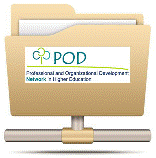Professional and Organizational Development Network in Higher Education

Professional and Organizational Development Network in Higher Education: Archives
Date of this Version
2011
Document Type
Article
Citation
Essays on Teaching Excellence Toward the Best in the Academy (2010-2011) 22(5)
Abstract
Maslow understood the value of knowing when to use the right tool. It is easy in teaching to over-rely on a familiar tool or a teaching technique that we are comfortable with using. In recent years the teacher’s tool box has grown and there are many new technology tools available in course management and learning systems (e.g., Blackboard, Moodle, etc.) and with free websites (e.g., Blogger, Wetpaint, etc.). While many faculty get in a teaching rut and use only lecture, or only small groups, or only discussion boards, it can also be daunting to decide which, of the many new tools is most appropriate to a given task. In this essay, I will compare common electronic tools and use Bloom’s Cognitive Domain Taxonomy (1956) and Chickering and Ehrmann’s Seven Principles of Good Teaching (1996) to connect these tools with skill development teaching goals and effective teaching practices. One tool is not intrinsically better than another tool, but may be more appropriate for a particular learning task. This essay will make some broad generalizations regarding these teaching tools, so it should be noted that the most appropriate tool to select will also require specific attention to the following issues: course content, student level, size of class, faculty teaching styles, university culture, availability of electronic resources, and of course class goals and learning objectives.


Comments
Copyright 2011, Tami J. Eggleston. Used by permission